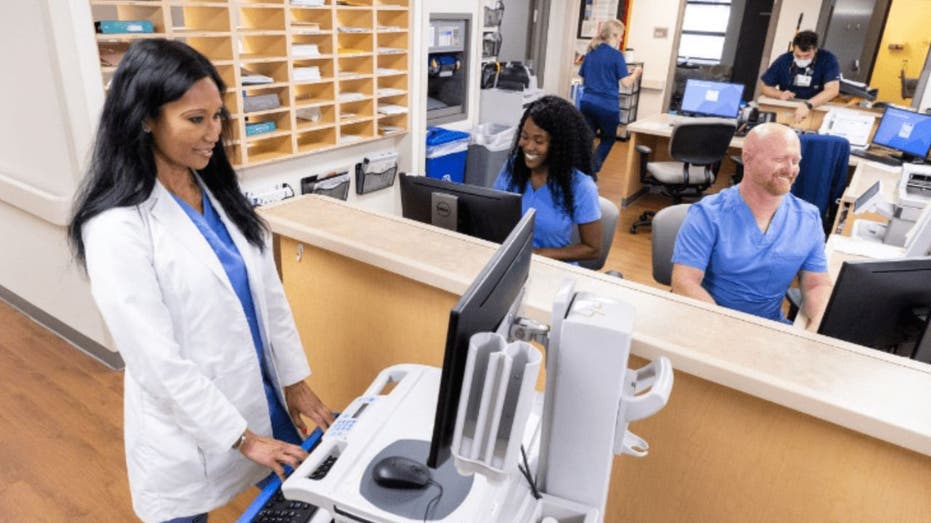As we navigate through 2024, the healthcare sector continues to grapple with a staggering rise in ransomware attacks and data theft incidents. The situation mirrors the previous year, which marked a record high for healthcare breaches, raising serious concerns about patient safety and data integrity.
Understanding the Ransomware Threat to Healthcare
The recent Ascension ransomware attack in May serves as a stark reminder of the vulnerabilities within the healthcare system. This incident disrupted critical services and raised questions about the security of patient data. According to a new report from Microsoft, the implications of such attacks extend far beyond financial losses; they pose a direct threat to the physical health of patients.
The Life-Threatening Consequences of Cyberattacks
Microsoft’s findings reveal that ransomware incidents can lead to catastrophic outcomes for patient care. Hospitals that experience ransomware attacks often lose access to essential diagnostic tools and patient records, which severely disrupts treatment processes. For instance, during such attacks, the rate of stroke code activations nearly doubles, with instances of confirmed strokes rising by 113.6%. Cardiac arrest cases also see an alarming 81% increase, while survival rates plummet from 40% to a mere 4.5%.
The ripple effects of these attacks extend to nearby healthcare facilities, which often face an influx of patients seeking urgent care. Many of these facilities may not be adequately equipped to handle the sudden surge, leading to longer wait times and potentially jeopardizing patient health.
Rural Health Clinics: A Vulnerable Target
It’s particularly concerning that ransomware attacks are not confined to urban hospitals. Rural health clinics are increasingly becoming targets for cybercriminals. These facilities often lack the resources necessary for robust cybersecurity measures, making them easy prey for attackers. Given that many rural communities rely heavily on these clinics for healthcare access, a successful ransomware attack can have devastating consequences for local populations.
The Growing Statistics of Ransomware in Healthcare
Since 2015, ransomware attacks targeting healthcare organizations have surged by an astonishing 300%, making this sector one of the top ten most targeted industries as of the second quarter of 2024. Cybercriminals are motivated by the sensitive nature of the data stored in healthcare systems, knowing that hospitals are less likely to risk patient outcomes by refusing to pay ransoms. Unfortunately, this trend of compliance only entrenches the healthcare sector’s reputation as a lucrative target for cyberattacks.
Healthcare Organizations: A Call for Better Cybersecurity
Part of the issue lies within healthcare organizations themselves. Many have cybersecurity budgets that fall short compared to other sectors, which hampers their ability to defend against sophisticated attacks. Alarmingly, some facilities lack dedicated cybersecurity personnel, such as a Chief Information Security Officer (CISO) or even a dedicated security operations center. Instead, cybersecurity responsibilities are often relegated to general IT staff, leaving critical gaps in protection. Moreover, many healthcare professionals receive little to no cybersecurity training, making them susceptible to phishing attempts and other cyber threats.
Protecting Yourself: Steps to Mitigate Risks
With the increasing frequency of cyberattacks on healthcare providers, it’s crucial for individuals to take proactive measures to safeguard their personal information and prepare for potential healthcare disruptions. Here are some essential steps:
- Stay Informed: Regularly check for updates from your healthcare providers regarding any service disruptions or data breaches.
- Maintain Personal Health Records: Keep copies of your health records, including medications, allergies, and past surgeries, readily accessible.
- Prepare for Medical Emergencies: Have a backup plan that includes knowing the locations of nearby healthcare facilities and their capabilities.
- Practice Cybersecurity Best Practices: Use strong, unique passwords for all online accounts, and consider a password manager for added security.
- Be Vigilant Against Phishing: Install robust antivirus software on your devices to help detect and block phishing attempts.
- Confirm Appointments: If you have appointments scheduled, check in with your healthcare provider to confirm or reschedule if needed.
- Monitor Patient Portals: Keep an eye on patient portals for updates regarding your medical records and communications during disruptions.
The Path Forward: Strengthening Cyber Defenses in Healthcare
The surge in ransomware attacks within the healthcare industry serves as a grim reminder that cybercriminals prioritize profit over lives. It is imperative for healthcare organizations to take lessons from the past two years and invest significantly in cybersecurity infrastructure. By hiring dedicated staff and enhancing security measures, the goal should be to prevent attacks from reaching a point where paying a ransom becomes a consideration.
Have you experienced healthcare service delays due to a cyberattack or system outage? Share your experiences with us to help raise awareness about this critical issue.
For more tech tips and security alerts, consider subscribing to our newsletter for the latest updates and advice.












